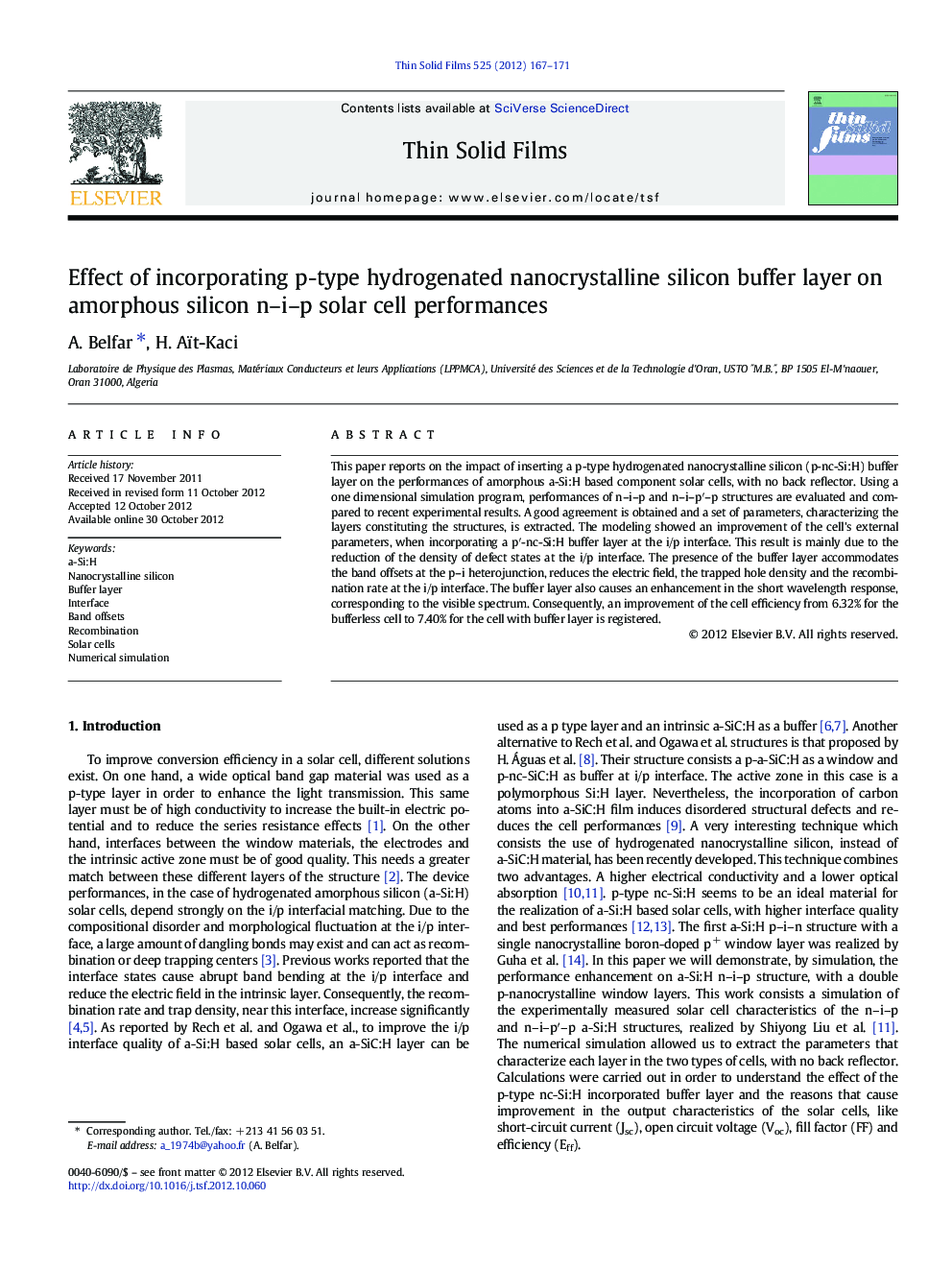| Article ID | Journal | Published Year | Pages | File Type |
|---|---|---|---|---|
| 1666513 | Thin Solid Films | 2012 | 5 Pages |
This paper reports on the impact of inserting a p-type hydrogenated nanocrystalline silicon (p-nc-Si:H) buffer layer on the performances of amorphous a-Si:H based component solar cells, with no back reflector. Using a one dimensional simulation program, performances of n–i–p and n–i–p′–p structures are evaluated and compared to recent experimental results. A good agreement is obtained and a set of parameters, characterizing the layers constituting the structures, is extracted. The modeling showed an improvement of the cell's external parameters, when incorporating a p′-nc-Si:H buffer layer at the i/p interface. This result is mainly due to the reduction of the density of defect states at the i/p interface. The presence of the buffer layer accommodates the band offsets at the p–i heterojunction, reduces the electric field, the trapped hole density and the recombination rate at the i/p interface. The buffer layer also causes an enhancement in the short wavelength response, corresponding to the visible spectrum. Consequently, an improvement of the cell efficiency from 6.32% for the bufferless cell to 7.40% for the cell with buffer layer is registered.
► n–i–p and n–i–p’–p structures are simulated and compared to experimental results. ► The devices are amorphous and nanocrystalline silicon based solar cells. ► A set of parameters, characterizing the layers of each structure, is extracted. ► Incorporating a p’ layer at the i/p interface improved the cell’s performances. ► The p’ buffer reduces the band offsets and the density of defect at the interface.
